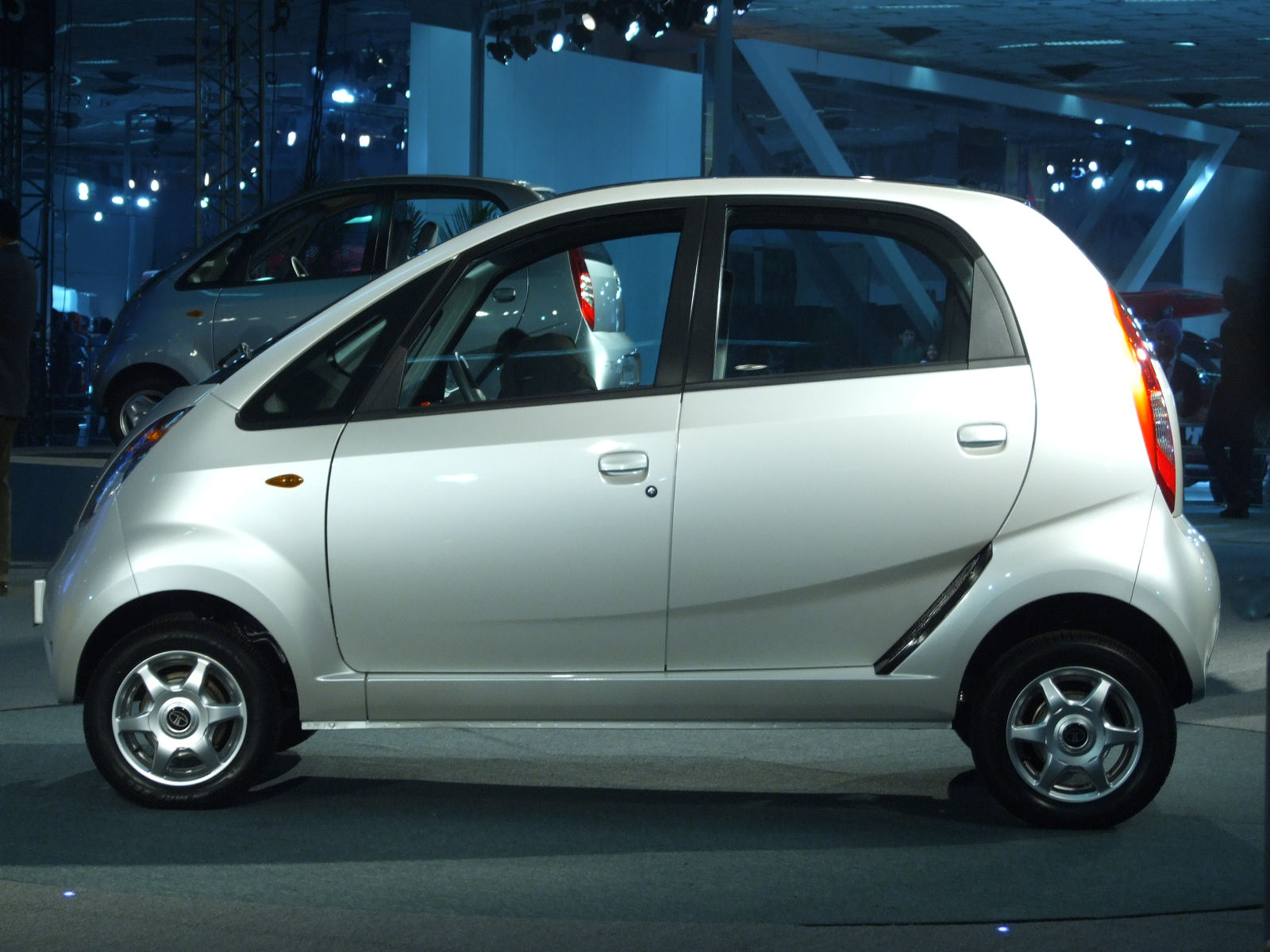
 The Tata Nano is a proposed city car debuted by India's Tata Motors at the 9th annual Auto Expo on January 10, 2008 at Pragati Maidan in New Delhi, India. Called the people’s car in Tata's promotional material, it was projected to be the least expensive production car in the world. The standard version of the Nano is projected to sell for Rs. 100,000 (approximately US $2500, GBP 1277, or € 1700) , not including fees or delivery.
The Tata Nano is a proposed city car debuted by India's Tata Motors at the 9th annual Auto Expo on January 10, 2008 at Pragati Maidan in New Delhi, India. Called the people’s car in Tata's promotional material, it was projected to be the least expensive production car in the world. The standard version of the Nano is projected to sell for Rs. 100,000 (approximately US $2500, GBP 1277, or € 1700) , not including fees or delivery.
Newsweek identifies the Nano as a part of a "new breed of 21st-century cars" that embody "a contrarian philosophy of smaller, lighter, cheaper" and portend a new era in inexpensive personal transportation — and potentially, "global gridlock" . The Wall Street Journal confirms a global trend toward small cars, led by the Nano.
The project to create a 1 lakh (1 lakh = 100,000) rupees car began in 2003, under the Chairman of Tata Motors, Ratan Tata. The strategy behind the project was the awareness of the number of Indian families who had two wheeled transport, but couldn't afford a four wheel car,[11] and was based on the company's success in producing the low cost 4 wheeled Ace truck in May 2005.
Technical specifications
According to Tata Group's Chairman Ratan Tata, the Nano is a 33 PS (33 hp/24 kW) car with a 623 cc rear engine and rear wheel drive, and has a fuel economy of 4.55 L/100 km (21.97 km/L, 51.7 mpg (US), 62 mpg (UK)) under city road conditions, and 3.85 L/100 km on highways (25.97 km/L, 61.1 mpg (US), 73.3 mpg (UK)). It is the first time a two-cylinder non-opposed petrol engine will be used in a car with a single balancer shaft. Tata Motors has reportedly filed 34 patents related to the innovations in the design of Nano, with powertrain design alone having 34 patents.[15] The head of Tata Motors' Engineering Research Centre, Girish Wagh has been credited with being one of the brains behind Nano's design.
According to Tata, the Nano complies with Bharat Stage-III and Euro-IV emission standards
Rear mounted engine
The use of a rear mounted engine to help maximize interior space makes the Nano similar to the original Fiat 500, another technically innovative "people's car". A concept vehicle similar in styling to the Nano, also with rear engined layout was proposed by the UK Rover Group in the 1990s to succeed the original Mini but was not put into production. The eventual new Mini was much larger and technically conservative. The independent, and now-defunct, MG Rover Group later based their Rover CityRover on the Tata Indica.
Welcome ! Feel free to read about TATA GROUP. If you like what you read, mention us in your post or click "vote for me" that can be found in the right side of the page . Hope to see you again ! :-)
Sunday, May 25, 2008
Tata Nano
Subscribe to:
Post Comments (Atom)






















No comments:
Post a Comment